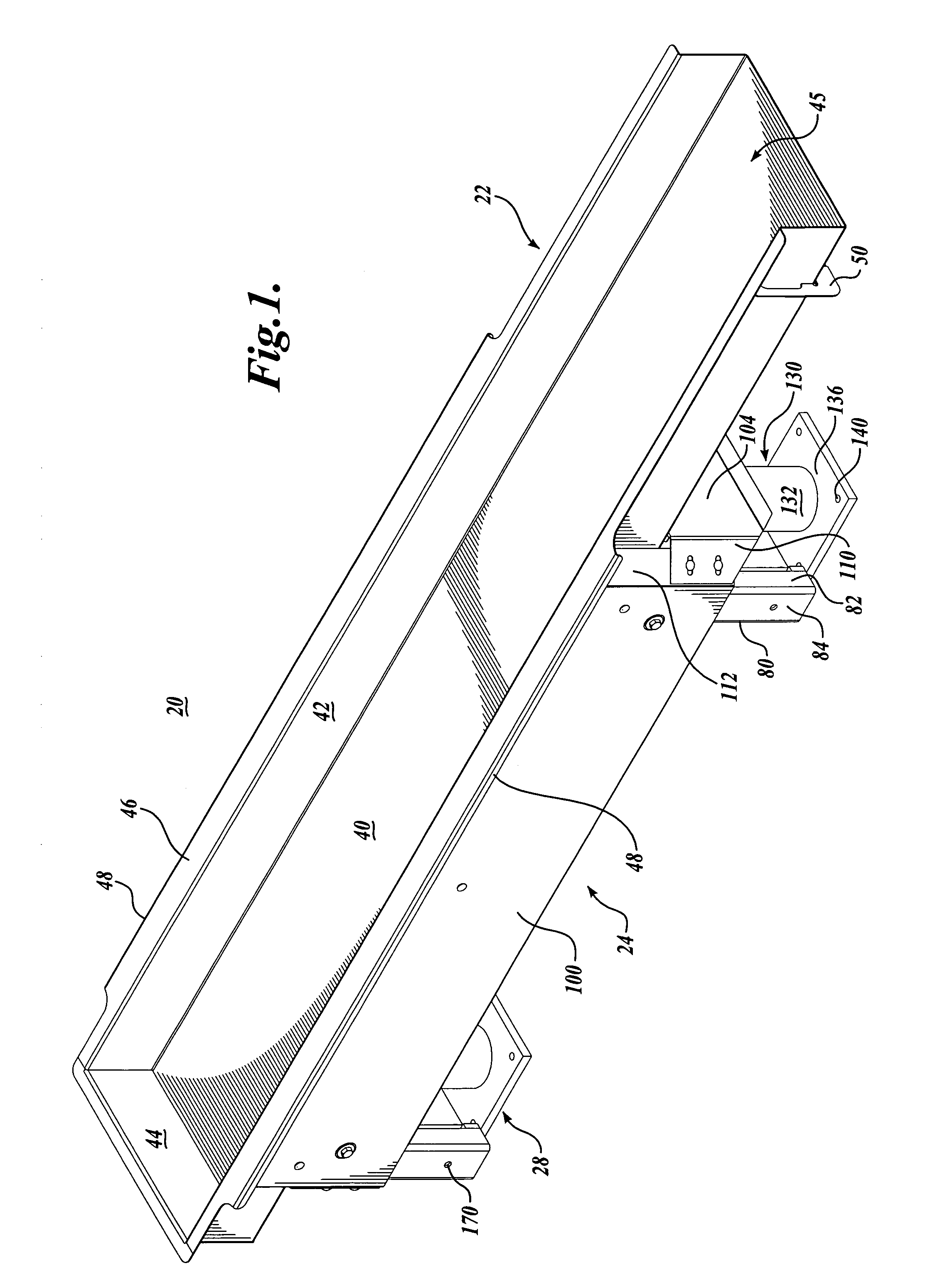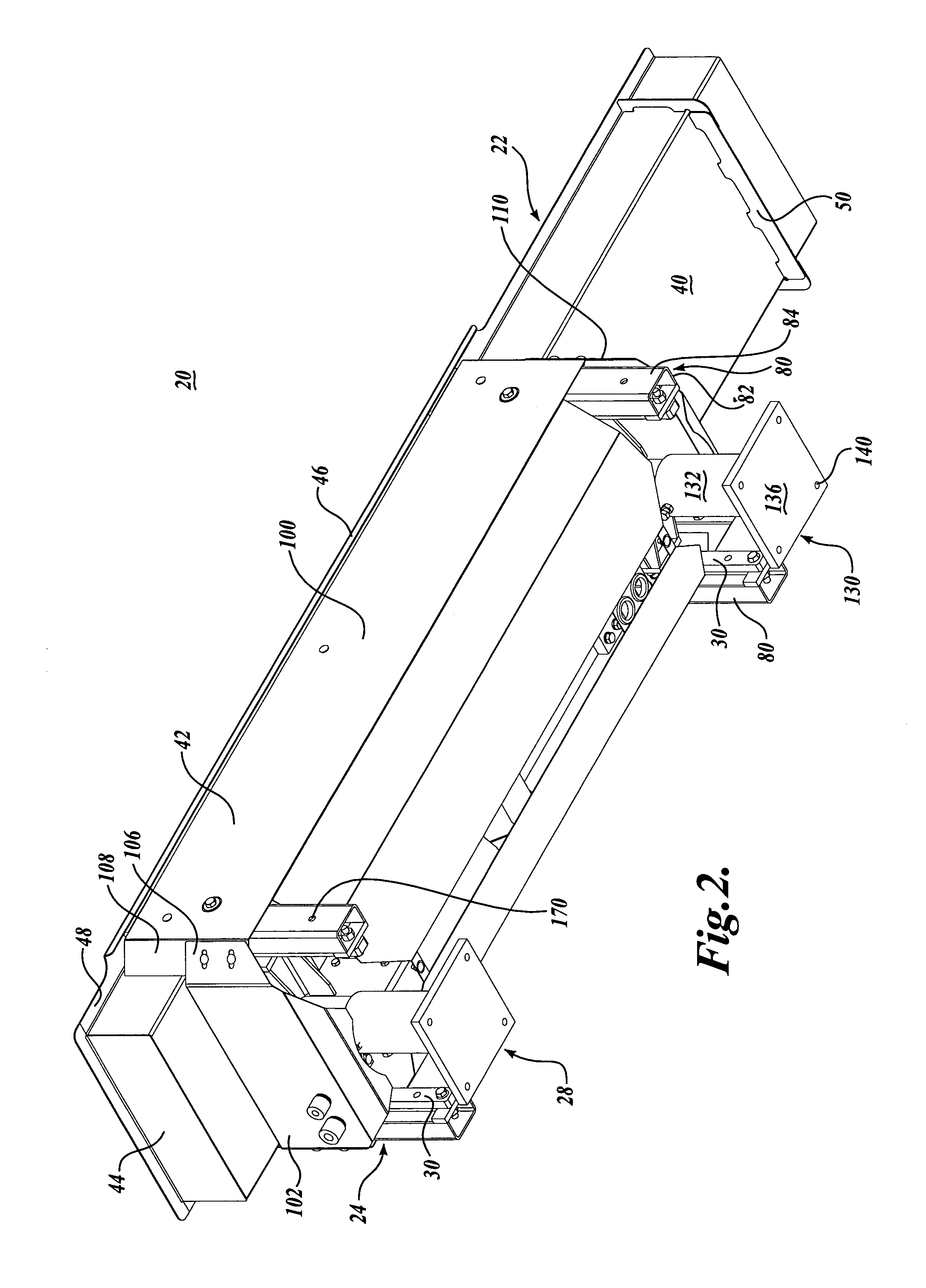Differential motion conveyor
a technology of conveyors and shafts, applied in conveyors, conveyors, jigging conveyors, etc., can solve the problems of inability to achieve the modest throughput capability of conveyors, failure at an inopportune time, and inefficiency of feed ra
- Summary
- Abstract
- Description
- Claims
- Application Information
AI Technical Summary
Problems solved by technology
Method used
Image
Examples
Embodiment Construction
[0040]Referring initially to FIGS. 1 through 4, conveyor 20 is illustrated as composed of an elongate trough structure 22 adapted to longitudinally reciprocate relative to a counterweight base structure 24 through a servo motor drive system 26. The base structure 24 is supported by a floor engaging stand or support frame 28 so as to be able to swing or reciprocate back and forth relative to the support frame by the use of a plurality of hanging swing arms 30 pivotally interconnected between the base structure and frame.
[0041]Next, describing the construction and operation of the present invention in greater detail, the trough structure 22 includes an elongated, flat pan 40 with upright sidewalls 42 and an upright end wall 44 at one end of the trough. One end of the trough 22 is closed off by end wall 44, while the opposite end 45 of the trough is illustrated as open. A top flange extends laterally outwardly from the upper edge of the sidewalls 42 and end wall 44 to add stiffness to ...
PUM
 Login to View More
Login to View More Abstract
Description
Claims
Application Information
 Login to View More
Login to View More - R&D
- Intellectual Property
- Life Sciences
- Materials
- Tech Scout
- Unparalleled Data Quality
- Higher Quality Content
- 60% Fewer Hallucinations
Browse by: Latest US Patents, China's latest patents, Technical Efficacy Thesaurus, Application Domain, Technology Topic, Popular Technical Reports.
© 2025 PatSnap. All rights reserved.Legal|Privacy policy|Modern Slavery Act Transparency Statement|Sitemap|About US| Contact US: help@patsnap.com



